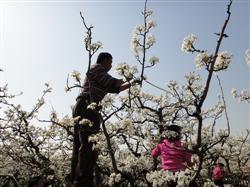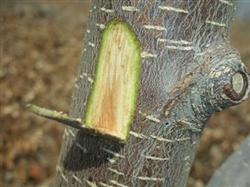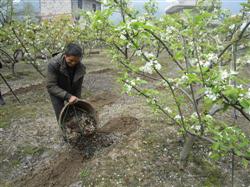What is the difference between pear trees and apples in pruning

1. Pear trees are tall, dry and slow to grow. Under the same management conditions, pear trees of the same age have smaller crown diameter, smaller stem circumference and conical crown than apple trees. But after fruiting, especially after reaching the peak fruit stage, the tree shape is more open than that of apple trees. Therefore, when shaping and pruning young pear trees, they should be lighter than apple trees; the growth potential and rising speed of the central stem should be timely and properly controlled to promote the growth power of other branches. Second, most pear varieties with high sprouting rate and low branching ability have high sprouting rate and weak branching ability, so there is less room for branch selection during shaping, and it is difficult to cultivate standard tree shape. In order to reduce the amount of pruning and make the pear tree bear fruit earlier, do not force the shape of the tree, especially the lateral branches, and wait for the angle to open naturally, and then add the lateral branches after sprouting branches at the back. Third, the pear tree has a strong apical advantage, multi-uniaxial extension, and it is difficult to cultivate large and medium-sized branches with many component branches and large opening angles. in the process of fruiting branch group culture, strong branches should not be released long, but should be truncated first, strong cutting and weak release every year; when the number of branches is reached, and then grow to release fruit, quantitative results, and leave room. Fourth, the number of main and lateral branches is more than that of apples, and the extended branches of these backbone branches should not be placed slowly or too lightly, so as to avoid the relative increase of blind nodes in the rear. With the outward extension of the backbone branches, the medium and short branches that occurred in the back in the early stage are easy to senescence and become long-term ineffective branches. finally strangled to death, forming the phenomenon of premature senescence and disconnection of branches. After causing this situation, it cannot be overcome without retrenchment. Fifth, the accessory buds at the base of pear branches are well developed and have a long life, which is the main source of dormant buds, so pear trees have stronger ability of branch regeneration than apple trees after regeneration. Therefore, after entering the full fruit stage, when the backbone branch growth is weak, the fruit position is seriously moved out or the old tree is renewed, this characteristic can be used to renew and rejuvenate in order to prolong the fruiting life.
- Prev

Protection against Frost injury of Pear trees in early Spring
1. Prevent frost 1. Spray salt water 10-20% salt water before the arrival of night frost, which can not only increase the concentration of somatic sap, reduce the freezing point, but also increase air humidity. Water does not condense as expected to release latent heat and avoid freezing damage. 2. Spraying 0.1-0.2% green vegetable solution in early spring to inhibit germination and postpone flowering.
- Next

Methods of fertilizing pear trees
First, the amount of fertilizer applied. Generally speaking, the production of 100kg pear fruit requires 0.47kg of pure nitrogen, 0.23kg of pure phosphorus, 0.48kg of pure potassium, and the ratio of nitrogen, phosphorus and potassium is 1pur0.5. If the yield of pears is 2500 kg per mu, 11.75kg of nitrogen, 5.75kg of phosphorus and 12kg of potassium are needed per mu. In the actual production, but root.
Related
- Moge, come on! The staff of the peasant association in the producing area of cantaloupe were frightened when the crowd gathered.
- Causes and Solutions of low Fruit setting rate of Apple
- Symptoms and control measures of passion fruit virus disease
- Fruit growing lesson: how do apple orchards keep high yields?
- Can you build orchards in the mountains? What are the pros and cons?
- How to manage the coloring period of Crisson grape?
- This paper introduces the processing technology of two kinds of fig products.
- How much is a month for retired teachers in rural areas by 2020?
- How can strawberry planting increase sugar content? We should pay attention to management in many aspects.
- What are the cultivation techniques on how to improve the yield of golden fruit?

